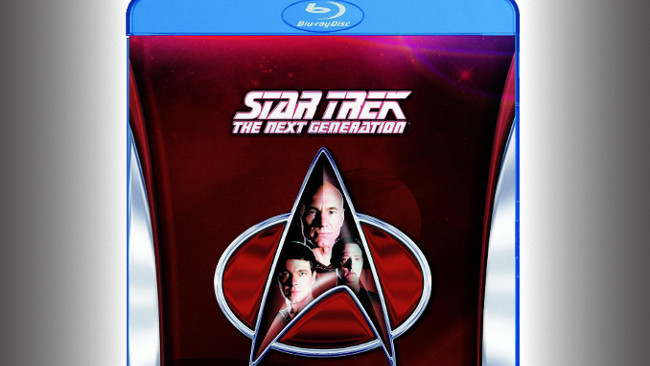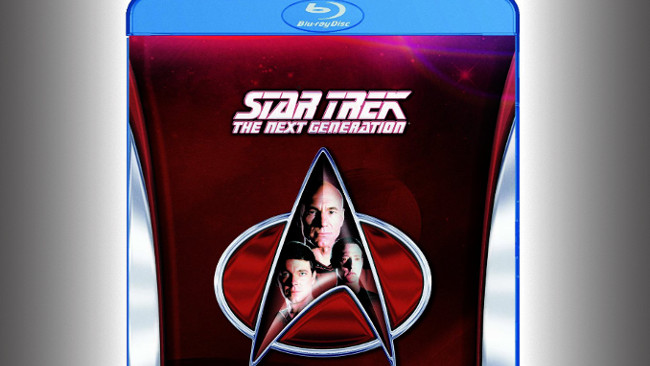
 Star Trek: The Next Generation Blu-ray remaster
Star Trek: The Next Generation Blu-ray remaster
On the occasion of the Star Trek's 50th anniversary, we revisit the wonderful remaster of Star Trek: The Next Generation to Blu-ray. By Joe Foster.
With the 50th Anniversary of boldly going now upon us with the release of Star Trek Beyond (a movie that shamelessly dismisses the 'odd numbered Trek movies are rubbish' theory), I took this opportunity to get reacquainted with an old favourite.
I have been a fan of the franchise for as long as I can remember. In a similar way to how modern audiences treat soap operas or period dramas like Downton Abbey, I treat the franchise mostly like an old favourite jumper: warm, cosy and familiar, no matter how smelly it might get on occasion (Star Trek V is one example that warps into mind).
Glorious (Re)Master
There was no better way of getting back into the 24th Century than with my recent purchase of the remastered versions of Star Trek: The Next Generation on shiny Blu-ray disc, first released back in 2012. I had seen clips and even some broadcasts of this version beforehand, but I never truly appreciated how spectacular the 1080p restoration really was until seeing a hard copy of it (the vibrant colours, the definition on the costumes, sets and makeup etc.). However, experiencing it is truly believing it. The restoration also delivers DTS-HD Master Audio 7.1 Surround Sound.
I had touched on the restoration process on my previous article here and how it was far more respectful and loving towards the original work. Previously CBS (who still owns the TV rights to the franchise) had done some very well-received work on the original 60's series. This involved going back to the film negatives, scanning them, cleaning them up and replacing the old effects with CGI effects, but still with a 60's design aesthetic, as though VFX specialists from the past had got their hands on modern technology.
Like the original series, Star Trek: The Next Generation was shot on 35mm film, although this time with Panavision cameras and lenses. It was filmed with a full aperture gate, but was presented for television in a 4:3 ratio. An impressive picture would have been guaranteed from the outset, had it not been for the fact that the special effects and original negatives were all edited on standard definition videotape, bringing the overall quality down for broadcast. Even looking back, I can remember how some of the earlier seasons looked very dark and drab with a very muted colour palette even on DVD.
In order to achieve the best quality, it was decided that the original film and audio elements had to be located in an underground mine in Pennsylvania, so that they could all be scanned. The team had to sort through shelves upon shelves of material – close to 3000 boxes of film canisters, with a total of 25,000 reels of film. Once each of the film rushes was scanned digitally, every episode was reconstructed, edited exactly as broadcast in the late 80's and early 90's. The construction of each episode also involved piecing together each filmed component of an effect (e.g. the Enterprise), its lights, the star-field behind it and anything else that was layered on the shot. Occasionally, an element was borrowed from one of the movies (for example, the Klingon Battlecruiser fly-by model used in the first and second seasons), so that had to be located separately. Sarah Paul, the VFX Coordinator, said that when she started the project, she had to go through 200 reels a week.
Occasionally, there would be some missing shots that would be upscaled from an SD version, ranging from a few seconds to a minute, though a few shots totaling around 131 seconds for a seven season run and 176 episodes is not a bad result at all...
Shiny New(ish) Model
What I feel does set this remaster apart is how it glorifies the original work, even more so than the original restoration. For the original series, all the effects were redone in CG. For The Next Generation, all of the effects were re-composited using the recovered original elements. They are essentially the same effects, but they now look a whole lot better, thereby preserving rather than replacing the work.
The same is true for the model effects. Very few CGI spaceships were used this time around (only when it was deemed necessary, with missing or damaged elements, etc.) and instead the original film elements, which contained the original impressive model work from the Industrial Light & Magic team, were scanned and were finally able to show the impressive detail and in-camera setups that were previously obscure or unseen. Even the restoration team was stunned at the level of resolution, detail and the skillful in-camera spaceship effects that it had uncovered.
As the lead compositor at CBS Digital Eric Bruno said, "you don't get better than real."
Future Endeavours?
All of this impressive work gives hope that the later series of the franchise would also experience a similar restoration effort. Unfortunately, there are complications that will take more than a Trek-style techno solution to solve...
It turns out that The Next Generation restoration hasn't made quite as much money as CBS hoped. Critically, it was a huge success, but the whole enterprise (no pun intended) cost roughly up to $20 million and took four years worth of work. Disc sales were apparently disappointing. Some blamed CBS for not marketing the box sets enough, while others blamed the decline in demand for physical media. Also, there is a theory that fans would rather wait for all seven seasons of a show to be available as one giant box set, as opposed to buying them individually. It has been suggested that a different strategy would need to be implemented, with streaming and network TV deals being put forward ahead of the Blu-Ray release.
It's been estimated that the restoration of both Deep Space Nine and Voyager (14 seasons in total) would cost roughly $40 million and would take around eight years worth of work.
Besides financial hesitation, the other problem is somewhat ironically CGI itself. When the two shows began (DS9 in 1993 and Voyager in 1995), they started with the usual model effects, but then changed to CGI further down the line. Tracking down the original CG elements for reference work is a far more complicated task, as those elements are scattered (two effects houses worked on DS9 alone) and some are already thought to be lost. If the effects are not available, they would have to be completely redone from scratch – a complex, as well as costly, voyage.
All this means any plans are being kept in dry-dock, at least for now. Luckily, one of the original artists claims to have virtually all the original elements. There's an interview with him HERE. The HD renders of his work that he teases are simply stunning...
Boldly Go
I'm blown away with the impressive and industry-defining restoration done on one of my all-time favourite shows. If you are a fan or if you're just into television history, I urge you to initiate warp speed (pun very much intended) and check them out for yourselves.
Tags: Studio & Broadcast


Comments